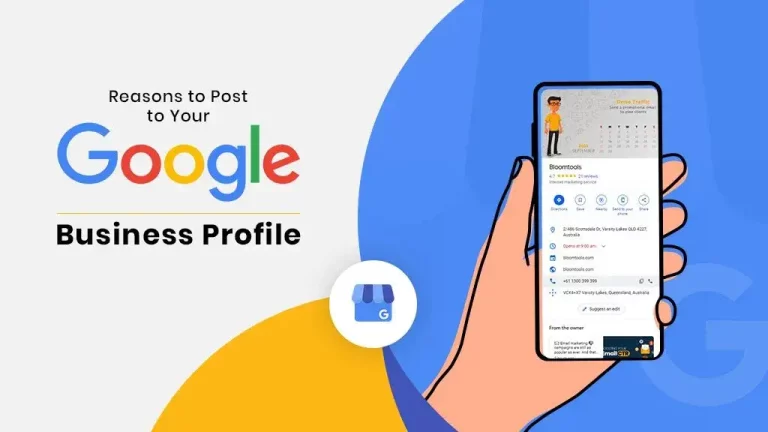How a Strong Digital Presence Can Transform Your Business in Greater London

In today’s digital age, the success of a business is increasingly determined by its online presence. For businesses in Greater London, a strong digital presence is not just an asset—it’s a necessity. The digital landscape offers a wealth of opportunities for businesses to reach new audiences, engage with customers, and drive growth. This article will explore how a robust digital presence can transform your business in Greater London, from enhancing brand visibility and credibility to increasing customer engagement and driving sales.
1. Enhancing Brand Visibility and Recognition
In a bustling metropolis like Greater London, competition is fierce. To stand out, your brand needs to be visible to potential customers, and a strong digital presence is key to achieving this.
1.1 Reaching a Wider Audience
Traditional marketing methods, while still valuable, often have geographical and logistical limitations. In contrast, a digital presence breaks down these barriers, allowing businesses to reach a much wider audience. Whether through social media, search engine optimisation (SEO), or online advertising, businesses can target potential customers across Greater London and beyond.
- Social Media: Platforms like Instagram, Facebook, Twitter, and LinkedIn enable businesses to engage with users from diverse backgrounds and interests. By creating shareable content, businesses can reach a broader audience, extending their brand’s reach across the city.
- SEO: A well-optimised website ensures that your business appears in search engine results when potential customers search for products or services you offer. This visibility is crucial for attracting organic traffic to your site.
- Online Advertising: Pay-per-click (PPC) advertising and social media ads allow businesses to target specific demographics and geographical areas, ensuring that your marketing efforts reach the right audience.
1.2 Building Brand Recognition
A consistent and strong digital presence helps build brand recognition, making your business more memorable to potential customers. When people repeatedly see your brand online—whether through social media, email marketing, or online ads—they are more likely to remember and trust your business.
- Brand Consistency: Maintaining consistency across all digital platforms—using the same logo, colours, fonts, and messaging—helps reinforce your brand identity and makes it easily recognisable.
- Content Marketing: Regularly publishing high-quality, valuable content helps establish your brand as an authority in your industry. Over time, this builds trust and recognition among your audience.
1.3 Local SEO for Greater London
For businesses in Greater London, local SEO is particularly important. Local SEO focuses on optimising your online presence to attract customers from a specific geographical area, which is essential for businesses that rely on local clientele.
- Google My Business: Claiming and optimising your Google My Business listing ensures that your business appears in local search results, especially in the “Local Pack” section, which highlights businesses near the user’s location.
- Local Keywords: Incorporating local keywords, such as “Greater London” or specific boroughs like “Camden” or “Hackney,” into your website’s content and meta descriptions helps your site rank higher in local search results.
2. Increasing Customer Engagement and Interaction
A strong digital presence not only increases your visibility but also provides numerous opportunities for customer engagement. Engaging with your audience online can lead to stronger customer relationships and increased loyalty.
2.1 Social Media Interaction
Social media platforms are powerful tools for building relationships with customers. They allow businesses to engage with their audience in real-time, responding to comments, answering questions, and participating in conversations.
- Two-Way Communication: Social media fosters two-way communication, enabling customers to interact with your brand directly. Whether they are leaving feedback, asking questions, or sharing content, your response can significantly impact their perception of your business.
- Community Building: Creating a community around your brand through social media groups or forums can help build a loyal customer base. Engaging content, such as polls, contests, and user-generated content, encourages participation and strengthens the bond between your brand and its followers.
2.2 Content Marketing
Content marketing is a key component of a strong digital presence, offering value to your audience while promoting your brand. Through blogs, videos, podcasts, and other forms of content, businesses can engage with their audience, address their needs, and provide solutions to their problems.
- Blogging: Regularly updating your website with informative and relevant blog posts not only improves your SEO but also engages your audience. By addressing common questions or concerns, you can position your brand as a trusted resource in your industry.
- Video Content: Videos are highly engaging and can capture attention more effectively than text. Whether through tutorials, product demos, or behind-the-scenes content, videos can convey your brand’s message in a more dynamic way.
- Interactive Content: Quizzes, polls, and interactive infographics can engage users in a fun and meaningful way, encouraging them to spend more time on your site and interact with your brand.
2.3 Email Marketing
Email marketing remains one of the most effective ways to engage with customers. A well-crafted email campaign can keep your audience informed, drive traffic to your website, and increase sales.
- Personalised Emails: By segmenting your email list and sending personalised messages, you can deliver content that is relevant to each recipient, increasing the likelihood of engagement.
- Newsletters: Regular newsletters keep your audience updated on your latest products, services, and promotions, as well as industry news and trends. They help maintain ongoing communication with your customers and keep your brand top-of-mind.
3. Driving Sales and Revenue Growth
One of the most significant benefits of a strong digital presence is its ability to drive sales and revenue growth. By effectively leveraging digital platforms, businesses can attract more customers, convert leads, and increase sales.
3.1 E-Commerce Integration
For many businesses, especially those in retail, integrating e-commerce capabilities into their digital presence is essential. An e-commerce platform allows customers to purchase products or services directly from your website, expanding your sales opportunities.
- 24/7 Sales: Unlike a physical store, an e-commerce site is open 24/7, allowing customers to shop at their convenience. This can lead to increased sales, particularly from customers who prefer online shopping or are located outside of your immediate area.
- Global Reach: While your business may be based in Greater London, an e-commerce platform can enable you to reach customers across the UK and internationally, significantly expanding your market.
- Upselling and Cross-Selling: E-commerce platforms can be set up to suggest related products or services to customers during the purchasing process, increasing the average order value and boosting sales.
3.2 Online Advertising
Online advertising, including PPC, social media ads, and display advertising, allows businesses to target specific audiences with precision, increasing the chances of conversion.
- Targeted Advertising: Online ads can be targeted based on demographics, interests, behaviour, and location, ensuring that your marketing efforts are directed at the most relevant audiences.
- Remarketing: Remarketing campaigns allow you to re-engage users who have previously visited your site but didn’t make a purchase. By displaying ads to these users as they browse other sites, you can encourage them to return and complete their purchase.
3.3 Conversion Rate Optimisation (CRO)
Conversion rate optimisation focuses on improving the performance of your website by increasing the percentage of visitors who take a desired action, such as making a purchase or signing up for a newsletter.
- A/B Testing: By testing different versions of your website’s pages, you can determine which elements drive the most conversions. This might include testing different headlines, calls-to-action, or page layouts.
- User Experience (UX) Improvements: Enhancing the user experience on your website—such as by improving navigation, reducing load times, and simplifying the checkout process—can significantly increase conversion rates.
4. Building Credibility and Trust
A strong digital presence is crucial for building credibility and trust with your audience. In an era where consumers increasingly research businesses online before making purchasing decisions, your digital reputation can make or break your success.
4.1 Professional Website Design
Your website is often the first point of contact potential customers have with your business. A professionally designed website instils confidence and sets the tone for the quality of your products or services.
- User-Friendly Design: A website that is easy to navigate, visually appealing, and mobile-responsive reflects positively on your business and encourages users to stay longer and explore your offerings.
- Credibility Indicators: Including trust signals such as customer testimonials, industry certifications, and security badges can reassure visitors that your business is reputable and trustworthy.
4.2 Online Reviews and Testimonials
Online reviews and testimonials are powerful tools for building trust. Positive reviews can influence potential customers’ decisions, while addressing negative reviews can demonstrate your commitment to customer satisfaction.
- Encouraging Reviews: Actively encourage satisfied customers to leave reviews on platforms like Google, Yelp, or Trustpilot. More positive reviews can enhance your reputation and improve your search rankings.
- Responding to Feedback: Responding to both positive and negative reviews shows that you value customer feedback and are willing to address any issues. This can enhance your brand’s reputation and build customer loyalty.
4.3 Social Proof
Social proof, such as endorsements from influencers, user-generated content, and social media mentions, can significantly enhance your brand’s credibility.
- Influencer Partnerships: Collaborating with influencers who resonate with your target audience can lend credibility to your brand and introduce it to new potential customers.
- User-Generated Content: Encourage customers to share their experiences with your products or services on social media. Reposting user-generated content not only builds trust but also engages your community.
5. Adapting to Market Changes and Trends
A strong digital presence allows businesses to quickly adapt to market changes and emerging trends. This agility is crucial in staying competitive in the fast-paced business environment of Greater London.
5.1 Real-Time Analytics and Insights
Digital platforms provide valuable data and insights that can inform your business strategy. By regularly monitoring analytics, you can identify trends, measure the effectiveness of your campaigns, and make data-driven decisions.
- Website Analytics: Tools like Google Analytics offer insights into your website’s performance, including traffic sources, user behaviour, and conversion rates. This information is invaluable for optimising your digital strategies.
- Social Media Insights: Social media platforms provide analytics on engagement, reach, and audience demographics. This data can help you tailor your content and advertising efforts to better meet your audience’s needs.
5.2 Adapting to Consumer Behaviour
Consumer behaviour is constantly evolving, and businesses must adapt to these changes to stay relevant. A strong digital presence allows you to quickly respond to shifts in consumer preferences and expectations.
- Personalisation: As consumers increasingly expect personalised experiences, businesses can use digital tools to deliver tailored content, offers, and recommendations to individual users.
- Omnichannel Strategies: Integrating online and offline experiences through omnichannel strategies ensures a seamless customer journey, whether customers are shopping online, visiting a physical store, or interacting on social media.
5.3 Staying Ahead of Competitors
In a competitive market like Greater London, staying ahead of the competition is essential. A strong digital presence allows you to monitor competitors’ activities, respond to industry trends, and differentiate your brand.
- Competitive Analysis: Regularly analysing competitors’ digital strategies can help you identify opportunities and gaps in the market. This insight can inform your own digital marketing efforts and help you gain a competitive edge.
- Innovative Marketing Tactics: Embracing new digital marketing trends and technologies—such as AI-driven marketing, video content, or voice search optimisation—can set your brand apart and attract more customers.
6. Conclusion
A strong digital presence is transformative for businesses in Greater London. It enhances brand visibility, increases customer engagement, drives sales, builds credibility, and allows businesses to adapt to market changes. In a city as dynamic and competitive as Greater London, a robust digital strategy is not just a luxury—it’s a necessity for long-term success.
By investing in your digital presence, you are investing in the future of your business. Whether through social media, SEO, content marketing, or e-commerce, the opportunities to grow and thrive are vast. As you continue to optimise and evolve your digital strategy, you will position your business for sustainable growth, enabling it to stand out and succeed in the vibrant and diverse market of Greater London.
Contact Us
You can contact us on Whatsapp:
or fill up the contact form





